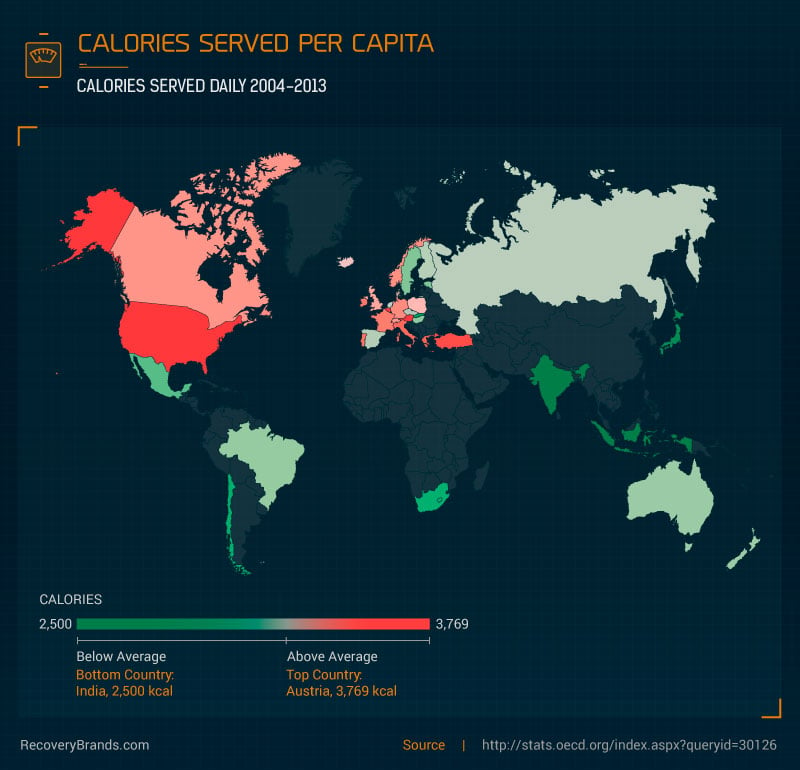How many calories are consumed per capita around the world? (Dorina Andress/Wikimedia Commons)
It’s a sad fact that some countries have too much food while others do not have enough. But how does Canada stack up, compared to the rest of the world?
To learn more about global consumption patterns, addiction treatment provider Recovery Brands looked at how many calories are consumed on average within the 34 member countries of the Organisation for Economic Co-operation and Development.
What they found might make you lose your appetite.
While the United States served up enough daily calories per capita to keep it in the red, it was surprisingly Austria that topped the list with 3,769 calories per person. Canada was above the average, weighing in at 3,419 calories per capita per day. In 1961, Canada was reporting 2,807 calories per capita per day.
Interestingly, more calories consumed didn’t always equate to higher rates of obesity. Although 33.3% of men and 35.8% of women in the United States are considered obese, Belgium, a country which has comparable calorie intake, boasts an obesity rate of only 10%. Conversely, Mexicans and Chileans consume fewer calories on average than many countries but have obesity rates near the top of the list.
Furthermore, Recovery Brands reports that:
- Impoverished countries — in which food costs make up large portions of household expenditures — are less likely to see extreme levels of obesity.
- Countries in which food intake is not limited by income are served about 3,500 calories per person per day.







